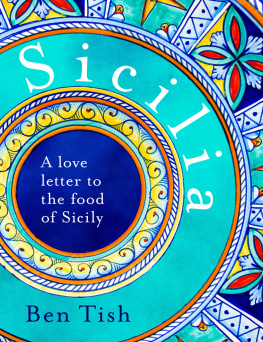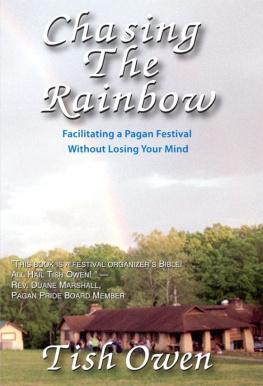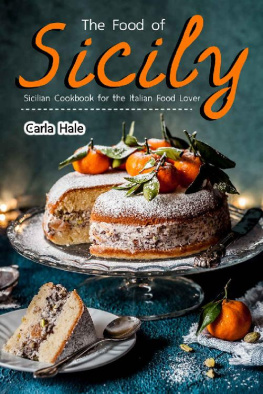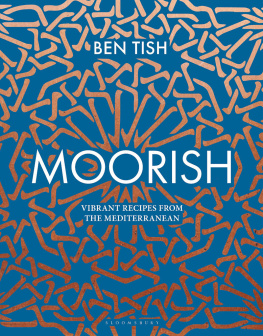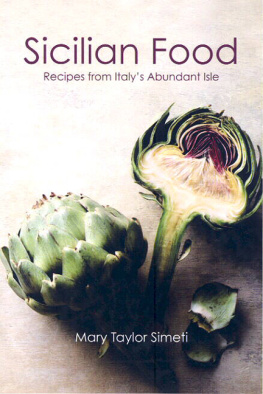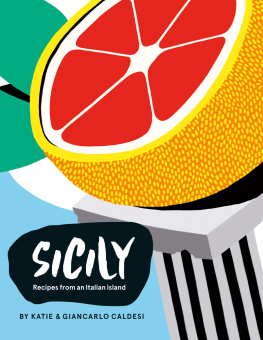Ben Tish - Sicilia: A love letter to the food of Sicily
Here you can read online Ben Tish - Sicilia: A love letter to the food of Sicily full text of the book (entire story) in english for free. Download pdf and epub, get meaning, cover and reviews about this ebook. year: 2021, publisher: Bloomsbury Publishing, genre: Home and family. Description of the work, (preface) as well as reviews are available. Best literature library LitArk.com created for fans of good reading and offers a wide selection of genres:
Romance novel
Science fiction
Adventure
Detective
Science
History
Home and family
Prose
Art
Politics
Computer
Non-fiction
Religion
Business
Children
Humor
Choose a favorite category and find really read worthwhile books. Enjoy immersion in the world of imagination, feel the emotions of the characters or learn something new for yourself, make an fascinating discovery.
- Book:Sicilia: A love letter to the food of Sicily
- Author:
- Publisher:Bloomsbury Publishing
- Genre:
- Year:2021
- Rating:3 / 5
- Favourites:Add to favourites
- Your mark:
- 60
- 1
- 2
- 3
- 4
- 5
Sicilia: A love letter to the food of Sicily: summary, description and annotation
We offer to read an annotation, description, summary or preface (depends on what the author of the book "Sicilia: A love letter to the food of Sicily" wrote himself). If you haven't found the necessary information about the book — write in the comments, we will try to find it.
Sicilia: A love letter to the food of Sicily — read online for free the complete book (whole text) full work
Below is the text of the book, divided by pages. System saving the place of the last page read, allows you to conveniently read the book "Sicilia: A love letter to the food of Sicily" online for free, without having to search again every time where you left off. Put a bookmark, and you can go to the page where you finished reading at any time.
Font size:
Interval:
Bookmark:



Sicilia is my letter of love to one of the oldest, most richly varied food cultures in Europe.
Sicily is a frustratingly complex contradiction in terms. At once both a frugal, peasant land with a simple, robust cuisine yet also a land full of ornate glamour and shameless extravagance. There isnt a country that I know with a richer or more diverse tapestry of cultural influences.
Ive spent much time exploring the regions of the mainland as well as the otherworldly island groupings off Sicilys coast the Aeolian and the Egadi. And every time I visit, I discover something new and wonderful.
Sicily sits at the true heart of the Mediterranean, between east and west, Europe and North Africa. As such it is perhaps no wonder that the islands cuisine is so richly diverse. The Moorish and Norman occupation of the island brought culinary innovations and advanced cooking techniques in tandem with the introduction of exotic fruits and vegetables to an already abundant and fertile soil citrus, almonds and spices mixing harmoniously with the simple indigenous olives, vines and wheat.
This book explores the island through its food. I have featured a favourite selection of traditional dishes, both simple and extravagant, as well as other dishes that Ive created, inspired by Sicilys bountiful produce, cooking styles and gloriously sun-soaked Mediterranean way of life.
The recipes within are in the main simple, sometimes no more than an assembly of beautiful ingredients, whilst others might be more time consuming but always eminently achievable with careful planning.
the african kiss
Sicilys history is rich, complex and diverse. It has experienced many years under various occupations including the Romans, Normans, Spaniards, French and Visigoth Greeks. Each occupier has left a little bit of their culture. However, for me it is the footprint of the Moors and the Berbers that has left the strongest mark.
It was on my first visit to the wild and sensual Palermo with its souk-like markets, noisy haggling, vibrant colours, evocative Arabic architecture and diverse demographics that first inspired me to write my book Moorish. In Moorish I focused not just on the better-known Moorish Andalusian cuisine of southern Spain but also on the wonderful cooking of Moorish-influenced Sicily.
Sicily, often thought of as the crossroads of Europe and as a strategically important gateway, found itself under Arab rule at the start of the 9th century. The Arab rule passed through various dynastic families until in 948 Hasan al-Kalbi declared himself Emir of Sicily, though quite soon rival emirates were established in Enna and Syracuse. The island was then divided into three administrative districts, whose names survive still di Mazara, Val di Noto and Val di Demone.
The Arab world was arguably the most advanced civilisation of its time and Sicily certainly benefited from becoming part of it, not least in terms of agriculture and culinary matters. It soon entered a period of great cultural enlightenment and economic progress, the benefits of which are seen and felt to this day.
In agriculture, the new rulers moved to diversify production and introduce new crops, including dates, lemons and sugar cane, all harnessed by a radical and very effective irrigation system.
The Arab influence is still seen today, particularly within Sicilian cuisine almonds, saffron, oranges, pistachio and pomegranates amongst many others, bear witness to their influence.
Many sweets retain clear Arab influence, using nuts as replacements for flour and honey to replace sugar, and adding fragrant flower waters for flavour. The highly skilled, forward- looking Arab cooks were adept at creating complex and highly designed confections. They created layers of vibrant colours, added preserving fruits to syrups to enhance the visual impact of cakes, biscuits and sweets. And all was carried out on the instruction of the Arab rulers and the monied classes. The extravagance that was on display then is still evident in Sicilian confections today. Sorbets and granite also owe their popularity to North African ingenuity, cleverly designed to combat the summer heat.
One of the most common dishes in western Sicily is couscous (or cus cus). It is celebrated each year at the end of September when San Vito Lo Capo hosts an international couscous festival. The west coast fishing town of Trapani has a seafood version close to my heart the seafood is deliciously poached in a rich stock scented with saffron and cinnamon and the couscous is stirred in just before eating, making for a hearty, nourishing lunch for the hard-working local fishermen.
The Arabs also promoted saffron more widely, helping it to become an elegant spice of choice in the Middle Ages, where it was commonly used to colour and subtly flavour classic Sicilian dishes like arancini and pasta con le sarde (pasta with sardines, pine nuts raisins and fennel).
And using their manufacturing skills, the Sicilian Arabs moved into mass production of dried pasta.
Amazingly, despite the banning of alcohol under Muslim law, the Zibibbo grape, used to make Passito di Pantelleria, the supreme dessert wine, was introduced to the island by the Arabs. They also encouraged the distillation of alcohol to produce sweet smelling perfumes eventually moving on to the production of grappa-style eaux de vie.
Even cooking techniques, now common place, such as controlled cooking over fire and deep-frying in oil, were introduced by the Arab chefs with the locals taking to these new and ground-breaking skills as if to their own these are techniques that are still widely used today.
When asked what it was that first made me fall for Sicily and its glorious cuisine, I say it was the beautiful nature of the Arab-Italian fusion and the way it perfectly reflects the muddled nature of modern life.
the food markets
I never tire of exploring the food markets of Sicily. They assault the senses with noise, colour, hustle, bustle, smoke and produce so strikingly vibrant and almost surreal that it knocks me back.
I remember the first time my wife Nykeeta and I visited Palermo and wandered into the Ballaro street market. It felt like being in a North African souk. Exotic piles of spices, soot-faced stall holders grilling vegetables and meat over billowing charcoal, vendors shouting and gesticulating and a mix of eager, wide-eyed tourists rubbing shoulders with locals, both young and old, haggling, bantering, laughing and eating.
Everything in the Ballaro seems bigger and bolder than anywhere else. Squashes several feet long, huge alien-like glistening tomatoes slowly cooking in the sun, vast tubs of prepared spikey artichokes ready to be taken home and cooked instantly, tangles of vibrant, ultra-green turnip tops. The many varieties of citrus blood oranges, meyer lemons, green satsumas, gigantic Cedro lemons to be eaten, skin, pith and all, highly-scented bergamots and bags of lemon and orange leaves for infusing in stews or for scenting meatballs. And to reinforce the feeling of being in a North African souk, exotic stalls of purple and white aubergines, pomegranates, ripe black figs, dates and fresh almonds.
Swordfish and tuna glistening in the sun, the fishmonger slicing pieces off the gigantic bodies. Octopus and varieties of fresh prawns sold by the handful and stuffed into used carrier bags to take home. Rough and ready but all the more charming for it.
Font size:
Interval:
Bookmark:
Similar books «Sicilia: A love letter to the food of Sicily»
Look at similar books to Sicilia: A love letter to the food of Sicily. We have selected literature similar in name and meaning in the hope of providing readers with more options to find new, interesting, not yet read works.
Discussion, reviews of the book Sicilia: A love letter to the food of Sicily and just readers' own opinions. Leave your comments, write what you think about the work, its meaning or the main characters. Specify what exactly you liked and what you didn't like, and why you think so.

